Collage is an artistic technique that involves gluing fragments of different materials on a solid surface. Initially created as a cubist experiment, this technique was soon accepted by Dadaists and Surrealists and was widely used later in modern art, particularly in the practice of artists who belonged to the Neo-Avantgarde wave. The term papier collé comes from the French word coller or “to glue”. The basic idea of collage resulted in the techniques of photomontage, decoupage, assemblage, decollage, and digital collage.
Notable Collage Artwork
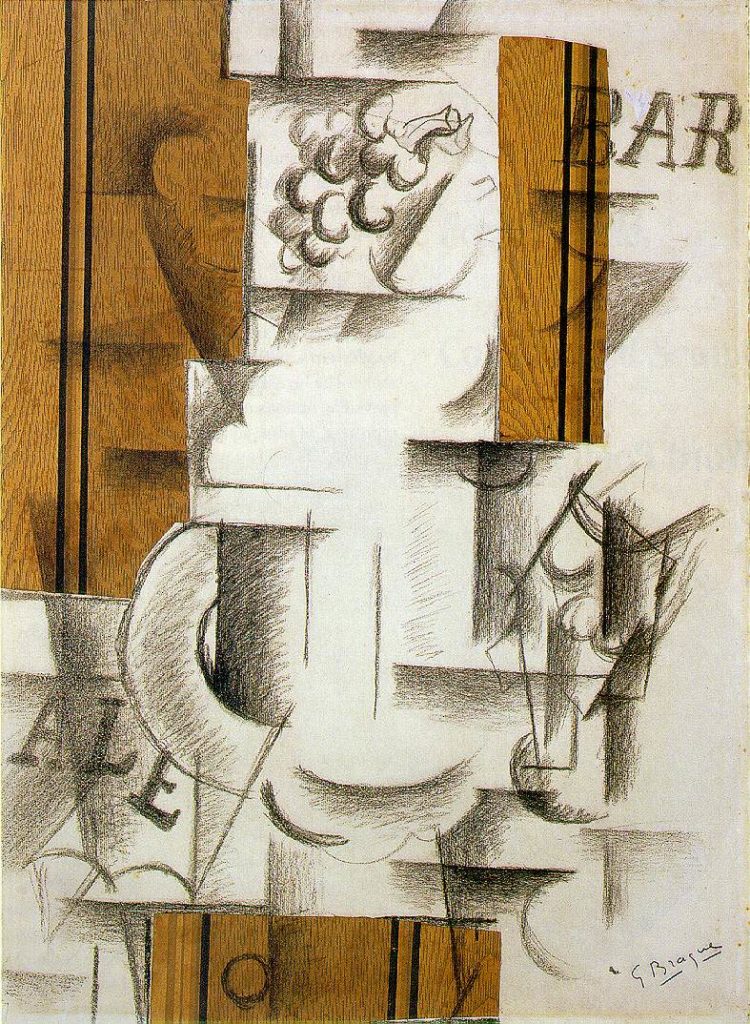
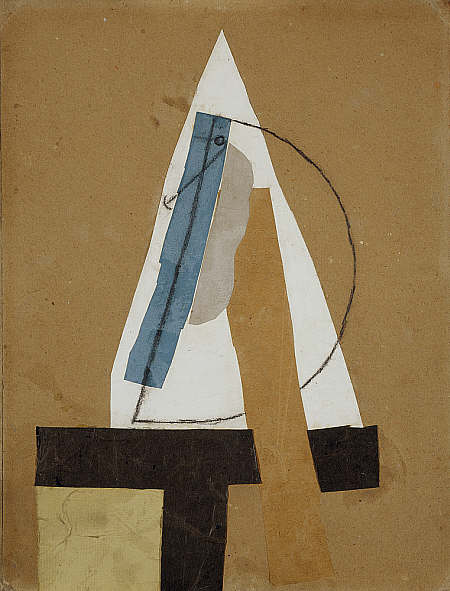
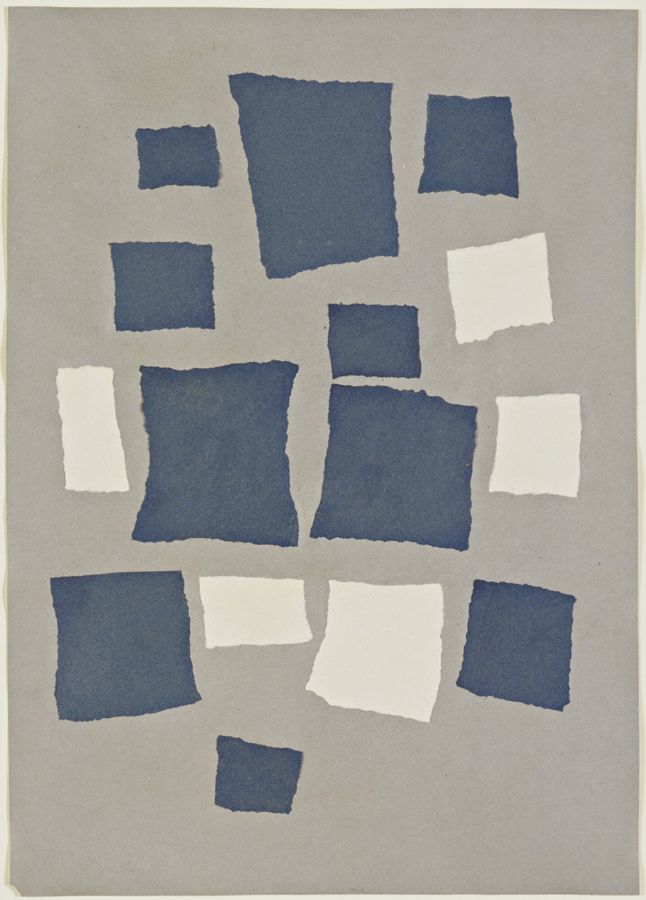
Collage with Squares Arranged According to the Laws of Chance. c. 1916-17
Torn-and-pasted paper on blue-gray paper, 19 1/8 x 13 5/8″ (48.5 x 34.6 cm)
Purchase, The Museum of Modern Art, New York. 1937
© 2006 Hans Arp / Artists Rights Society (ARS), New York / VG Bild-Kunst, Bonn
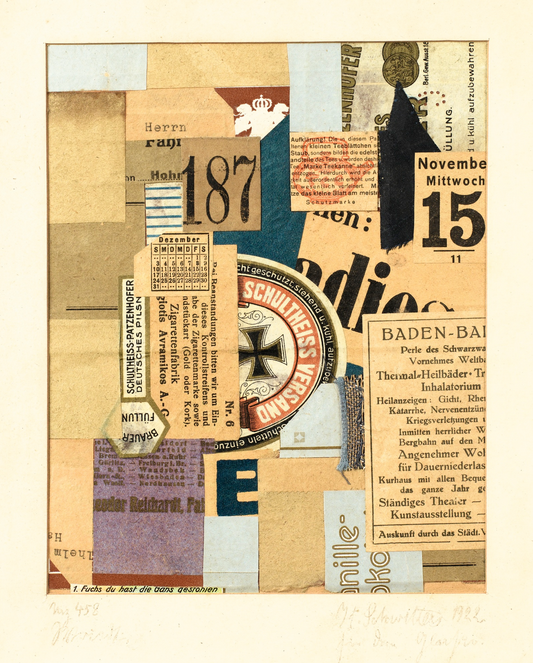
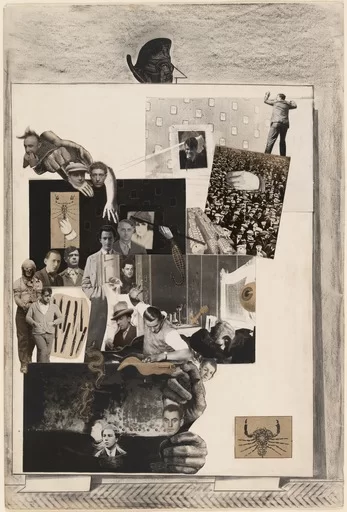
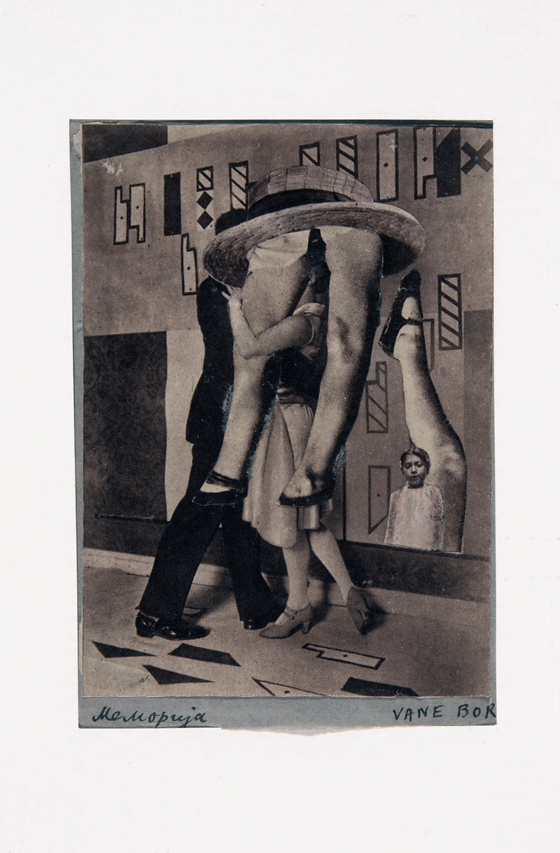
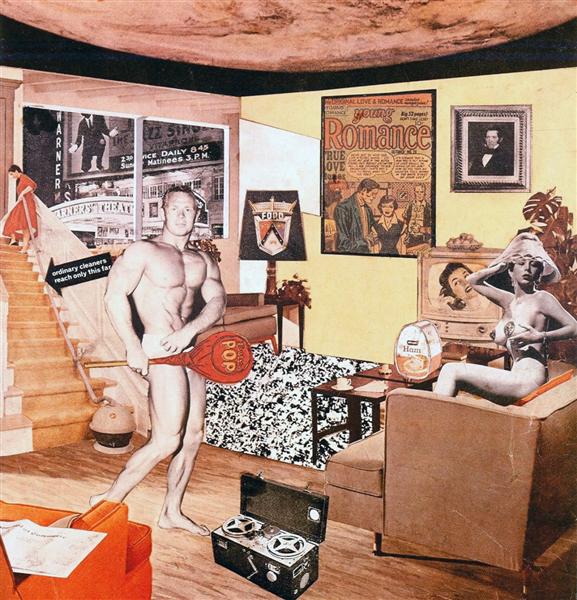
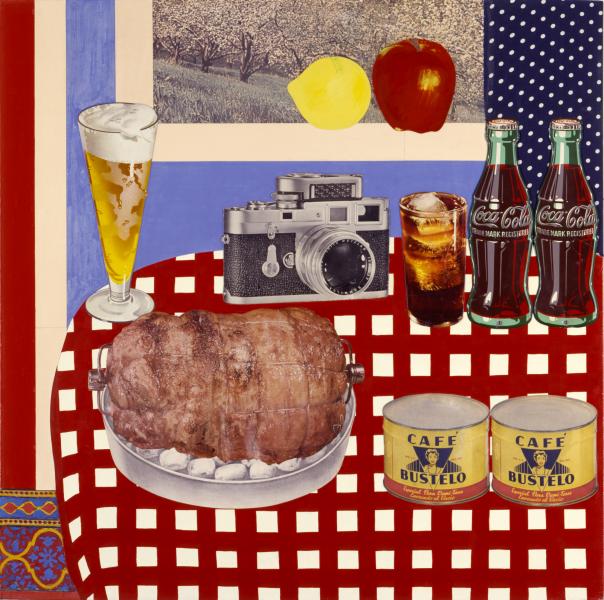

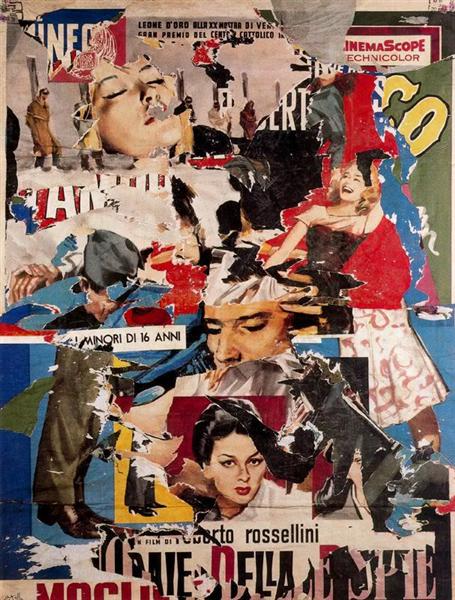
Cubist Origins of Collage
Georges Braque first applied the collage technique to the 1912 Fruit Dish and Glass charcoal drawing. This invention took place during a summer in Sorgues in the south of France, where Pablo Picasso and Braque worked together. Upon Picasso’s return to Paris, Braque accidentally noticed a faux bois wallpaper in Avignon, which he then incorporated into still life. The relationship of textures obtained by the collision of charcoal and wallpaper completely occupied Braque and Picasso. The still life is what the Cubists most often represented with this technique. The phenomenon of introducing material that was not created for the needs of the painting by artistic means, but on the contrary is a widely available industrial product – opened the question of the authorship limits that will be revolutionized by Marcel Duchamp with the Readymade concept a few years later.
Dadaism
Following in the footsteps of Cubist achievements, Dadaism adopted a new collage technique and reinterpreted it in the spirit of confrontation with bourgeois aesthetics. The destructive attitude towards all previous artistic canons was reflected in Dadaist collages. By using remains of everyday life such as torn tickets, candy wrappers, or pieces of newspaper articles to create an artwork, the Dadaists further encouraged the juxtaposition of unequivocally worthless objects with the idea of art exclusivity. Dadaists who expressed themselves in the medium of collage are Hans Arp, Kurt Schwitters, Hannah Höch, Tristan Tzara.
Surrealism
Collage was a pretty common form of artistic expression among the Surrealists. The surrealist collage was characterized by the construction of a distinctive visual based on the irrational. Unlike cubist or dadaist collage, surrealist collage is composed in an extremely precise way. By blending different elements in a meticulous way, this collage creates the illusion of a materialized vision of a dream that was an inexhaustible inspiration to this artistic group. The Surrealists who worked in the collage medium are Max Ernst, Man Ray, Joan Miro, Andre Breton, Jeannette Ducrocq Tanguy, Yves Tanguy, Benjamin Péret, Paul Éluard, Stevan Živadinović Vane Bor.
Pop-Art
Pop Art, which has been developing rapidly since the mid-fifties in Great Britain and the USA, placed a new form of collage in modern art. When analyzing the poetics of pop collage, one should take into account artistic traditions such as the then-dominant Abstract Expressionism to which Pop Art responded. The new aesthetics of figurality was accompanied by fragments from popular culture, advertising and other elements of mass culture that served as a starting point for these artists. Moving away from theorizing about the nature of painting and abstraction as the dominant category, Pop artists saw collage and photomontage as a field in which they can achieve critical-subversive streams of their ideas with visually appealing means. Pop artists who have practiced these techniques are Richard Hamilton, Peter Blake, Peter Phillips, Eduardo Paolozzi, Tom Wesselmann.
New Realism
New Realism as a movement officially formed in 1960 in France is often seen as a counterpart to Pop Art. New Realism also opposed the dominance of abstract art while completely rejecting figurality in the form characteristic of socialist realism. The motifs used by these artists came from the everyday life of ordinary people, from industrialized spaces, movies, or commercials. Artists of New Realism often worked to break the idea of the glamor of a work of art as opposed to Pop artists who based their ironic approach on fostering glamor. In relation to the collage technique, another link can be seen between the Dadaist tradition and the practice of New Realism artists who dealt with social deviations in post-World War II systems. The anti-glamor approach is embodied in the practice of a kind of street archeology of popular culture. Artists who practiced the technique of decollage, scraped and tore numerous posters that were glued on top of each other and built artwork from these fragments. The artists of New Realism are Raymond Hains, Mimmo Rotella, Wolf Vostell, Jacques Villeglé.
Photomontage
Photomontage is a technique which involves merging cut parts or whole photos into a separate whole or a composite photography. These composite images are sometimes photographed to get a more convincing final image. This procedure is called compositing. Photomontage was very common among Dadaists and Surrealists as well as among Constructivists.
Decoupage
Decoupage is a technique, a subtype of collage, which involves cutting and placing the cutouts on the surface in order to simulate painting. Cut motifs are most often coated several times with varnish or other sealant for protection. Avant-garde artists who experimented with this technique often used more abstract forms.
Assemblage
The assemblage technique developed almost simultaneously with collage. As a collage and assemblage, it is part of a broader cubist experiment that involved Picasso’s application of wood scraps and textile fragments on canvas. The assemblage continues the idea of collage, with the fact that, unlike the collage that binds to the vertical surface, the assemblage enters the third dimension, ie space. The assemblage was very common in surrealist works, as it was during the ’50s and ’60s with the appearance of Neo-Dadaism and Arte Povera.
Decollage
Decollage is a technique that is related to the activities of members of the New Realism art movement. French word décollage translates into English as “to become unstuck”. Unlike collage, which involved building artwork from selected fragments or entire existing images, decollage was created by cutting or tearing away parts of a particular image. This procedure often referred to the use of old posters that artists would tear apart and later incorporate in their work.
Digital collage
Digital collage is part of a broader phenomenon in contemporary art called Digital Art. With the help of computer software such as Photoshop, it is possible to compose visual elements as well as audio or video elements into the collage structure.
Notable Artists
- Georges Braque (1882-1963)
- Pablo Picasso (1881-1973)
- Hans Arp (1886-1966)
- Kurt Schwitters (1887-1948)
- Hannah Höch (1889-1978)
- Tristan Tzara (1896-1963)
- Max Ernst (1891-1976)
- Man Ray (1890-1976)
- Joan Miro (1893-1983)
- Andre Breton (1896-1966)
- Jeannette Ducrocq Tanguy (1896-1977)
- Yves Tanguy (1900-1955)
- Benjamin Péret (1899-1959)
- Paul Éluard (1895-1952)
- Stevan Živadinović Vane Bor (1908-1993)
- Richard Hamilton (1922-2011)
- Peter Blake (1932-)
- Peter Phillips (1939-)
- Eduardo Paolozzi (1924-2005)
- Tom Wesselmann (1931-2004)
- Raymond Hains (1926-2005)
- Mimmo Rotella (1918-2006)
- Wolf Vostell (1932-1998)
- Jacques Villeglé (1926-)
Related Art Terms
- Cubism
- Analytic Cubism
- Synthetic Cubism
- Dadaism
- Surrealism
- Pop-Art
- Arte Povera
- New Realism
- Photomontage
- Decoupage
- Assemblage
- Decollage
- Digital collage
